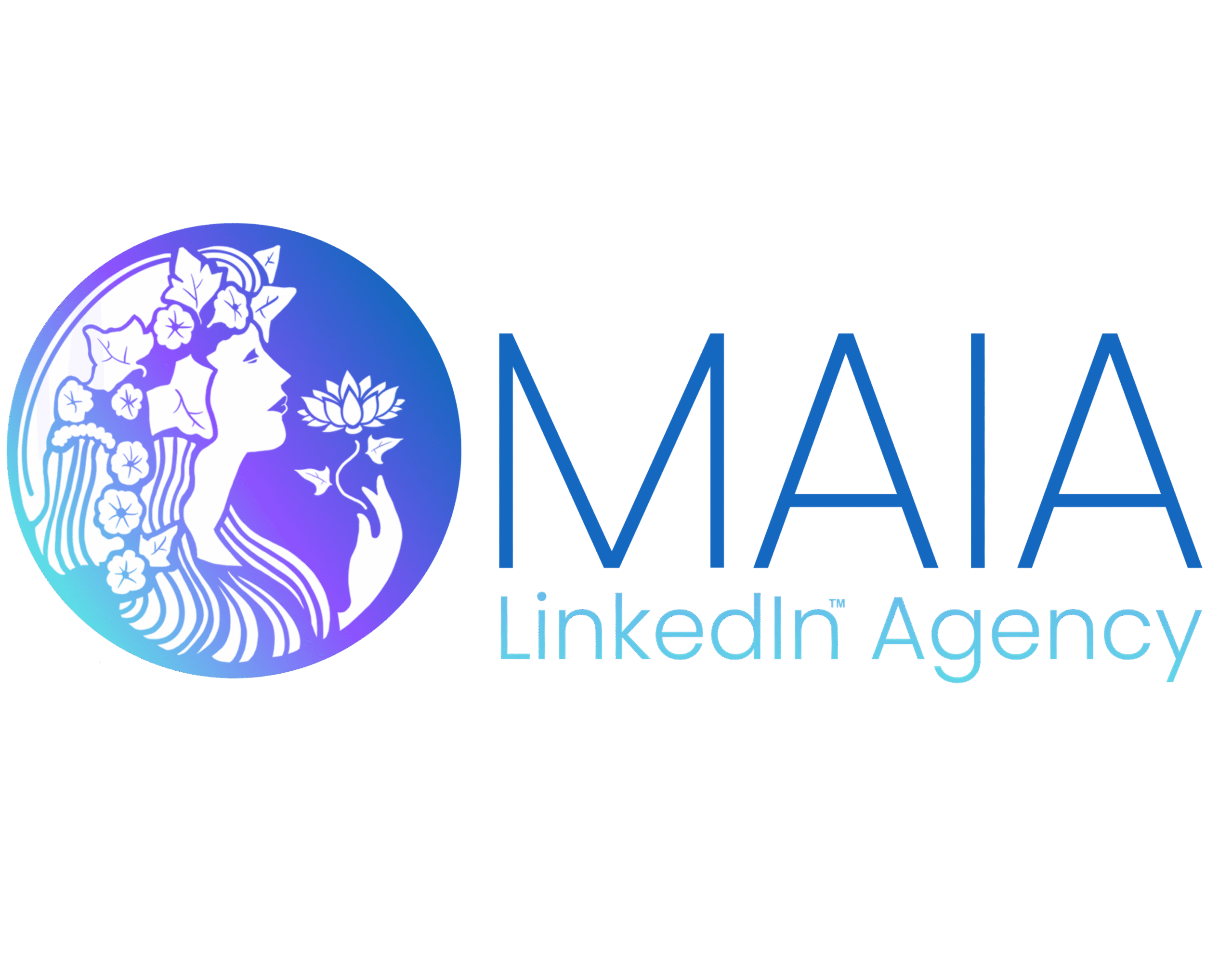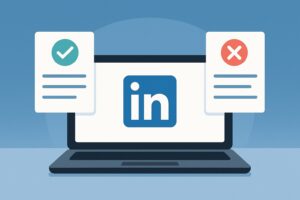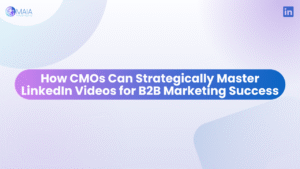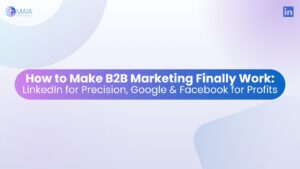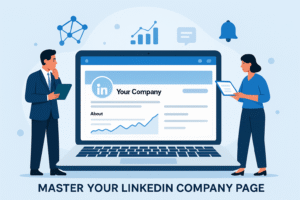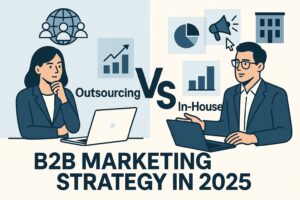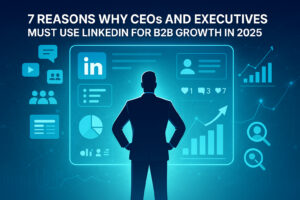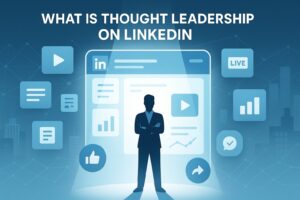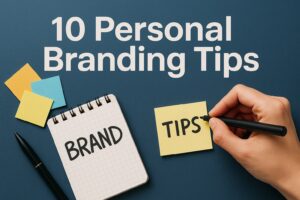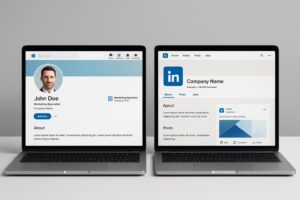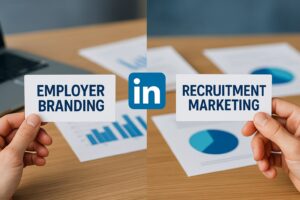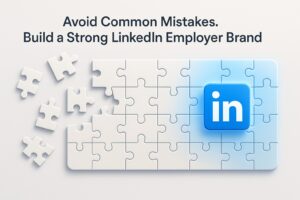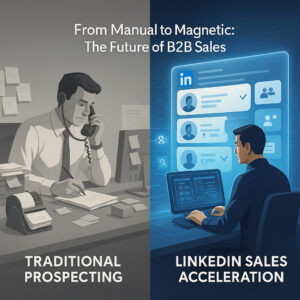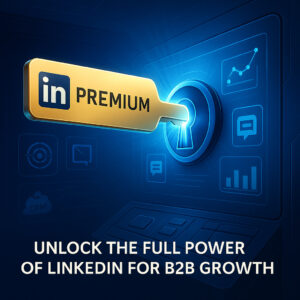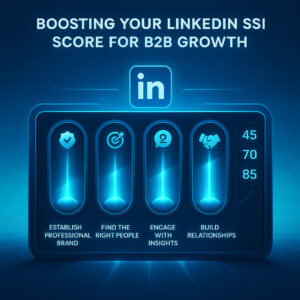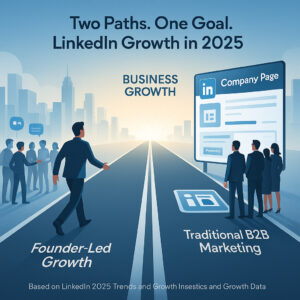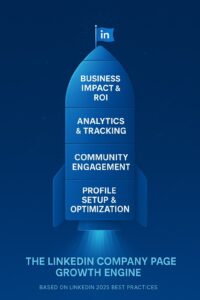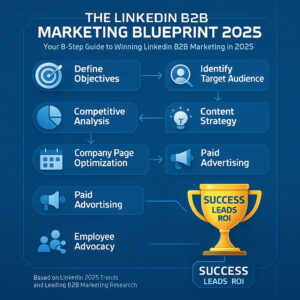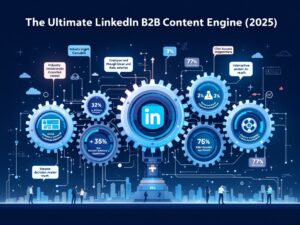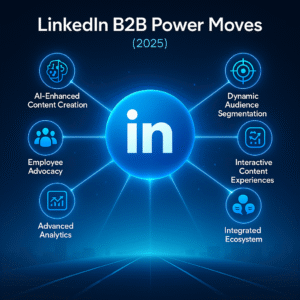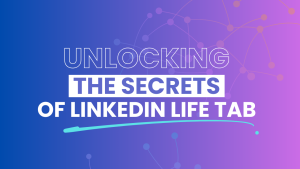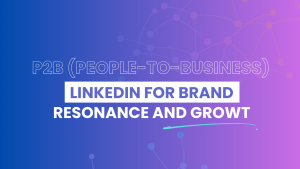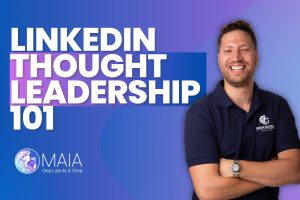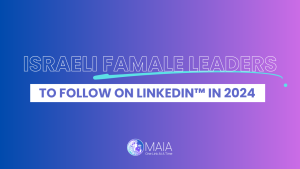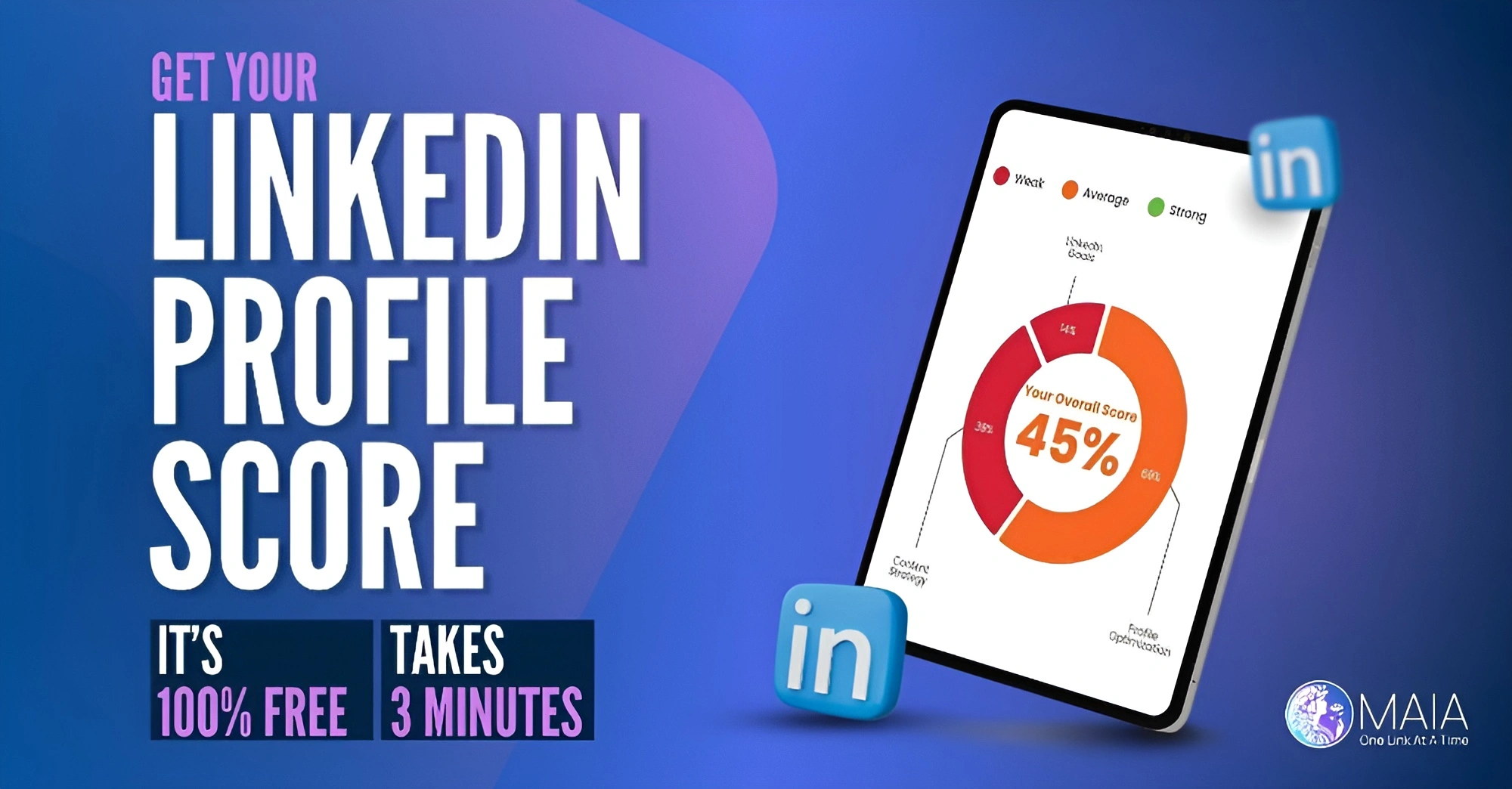How to Build a Winning LinkedIn B2B Marketing Plan [2025 Checklist]
LinkedIn has firmly established itself as the premier platform for B2B marketing, with 96% of B2B marketers using the platform for organic content distribution and 80% of B2B leads generated through LinkedIn, according to recent data from the LinkedIn Marketing Solutions 2025 B2B Trends Report.
As we navigate through 2025, the platform continues to evolve with new features and algorithm changes that demand a strategic approach to maximize your ROI. This comprehensive guide will walk you through creating an effective LinkedIn B2B marketing plan tailored for today’s professional landscape.
Why LinkedIn Remains Crucial for B2B Marketing in 2025
Before diving into the specifics of your marketing plan, it’s important to understand why LinkedIn continues to dominate the B2B marketing space:
-
LinkedIn boasts over 1 billion members across 200+ countries and territories as of 2025
-
Decision-makers spend 54% more time on LinkedIn than other professional platforms
-
95% of B2B content marketers use LinkedIn for organic content distribution
-
LinkedIn generates 3X more conversions than other major ad platforms for B2B campaigns
These statistics demonstrate that LinkedIn isn’t just another social media platform—it’s a specialized business ecosystem where your target audience is actively engaging with content related to their professional interests.
Step 1: Define Your LinkedIn B2B Marketing Objectives
Every successful marketing plan begins with clear, measurable objectives. For LinkedIn B2B marketing in 2025, consider focusing on:
Brand Awareness Objectives
Increasing visibility within your industry and establishing thought leadership are foundational goals. Set targets for:
-
Follower growth rate (aim for 3-5% monthly growth)
-
Content engagement metrics (likes, comments, shares)
-
Brand mention frequency
Lead Generation Objectives
LinkedIn’s 2025 environment offers enhanced lead generation capabilities. Establish clear targets for:
-
Number of qualified leads generated monthly
-
Cost per lead (CPL)
-
Lead-to-opportunity conversion rate
Relationship Building Objectives
LinkedIn excels at facilitating professional relationships. Set goals for:
-
Connection growth with decision-makers
-
Engagement rate with target accounts
-
Response rate to personalized outreach
According to Edelman’s 2025 Trust Barometer, B2B buyers now require an average of 7-8 touch points before making a purchase decision, making consistent engagement crucial.
Pro Tip: Align your LinkedIn objectives with your overall business goals to ensure your efforts contribute meaningfully to company success. Our strategy specialists can help you align these objectives with your business needs.
Step 2: Identify Your Target Audience on LinkedIn
LinkedIn’s detailed targeting capabilities make it essential to clearly define who you’re trying to reach:
Create Detailed Buyer Personas
In 2025, LinkedIn personas should include:
-
Job titles and functions
-
Industry and company size
-
Professional challenges and pain points
-
Content consumption preferences (format, topics, engagement patterns)
-
Group memberships and influencer followings
Leverage LinkedIn’s Advanced Audience Insights
LinkedIn’s newest audience analysis tools provide valuable data on:
-
Real-time industry trends affecting your audience
-
Content engagement patterns by role and seniority
-
Professional interest clustering
Research from Forrester’s 2025 B2B Buying Patterns Report shows that 78% of B2B purchase decisions now involve multiple stakeholders across different departments, making it essential to map content to various decision-makers.
Step 3: Conduct a Competitive Analysis
Understanding your competitors’ LinkedIn presence helps identify opportunities and gaps:
Analyze Competitor Content Performance
Examine:
-
Content themes and formats that generate highest engagement
-
Posting frequency and timing patterns
-
Audience growth strategies
Identify Competitive Differentiation Opportunities
Look for:
-
Underserved topics within your industry
-
Content formats competitors aren’t leveraging effectively
-
Engagement gaps in competitor strategies
Tools like LinkedIn’s Content Analytics and third-party platforms such as Semrush and Sprout Social can provide competitive intelligence to inform your strategy.
Step 4: Create Your LinkedIn Content Strategy
Content remains the cornerstone of LinkedIn marketing success in 2025:
Content Pillars for 2025
Effective LinkedIn B2B content strategies now typically include:
-
Thought Leadership: Original insights on industry trends and challenges
-
Educational Content: How-to guides, tutorials, and practical advice
-
Social Proof: Case studies, testimonials, and client success stories
-
Company Culture: Behind-the-scenes content that humanizes your brand
-
Interactive Content: Polls, questions, and conversation starters
Content Formats Performing Best in 2025
According to LinkedIn’s internal data, these formats are showing highest engagement:
-
Carousel Posts: 3x higher click-through rate than single-image posts
-
Short-form Video: 2-3 minute videos receive 30% more engagement than longer formats
-
LinkedIn Articles: Long-form content establishing thought leadership
-
LinkedIn Live: Generates 7x more reactions and 24x more comments than native video
-
LinkedIn Newsletters: Average open rates of 45% compared to 20% for email newsletters
Recent data from Content Marketing Institute’s 2025 B2B Content Marketing Report shows that 72% of B2B marketers cite LinkedIn as their most effective content distribution channel.
Content Calendar Development
Create a structured content calendar that includes:
-
Regular posting schedule (3-5 times per week is optimal for most B2B companies)
-
Content theme rotation based on your pillars
-
Format variety to maintain audience interest
-
Alignment with industry events, product launches, and seasonal trends
Pro Tip: Work with experienced LinkedIn content strategists to develop a content plan that resonates with your specific audience while supporting your business objectives.
Step 5: Optimize Your LinkedIn Company Page
Your company page serves as your LinkedIn headquarters and should be fully optimized:
2025 Company Page Essentials
-
Complete Profile: Fill out all sections with keyword-rich descriptions
-
Visual Branding: Use custom banners that highlight your value proposition
-
Featured Content: Showcase your most valuable resources and case studies
-
Custom CTA Button: Direct visitors to your highest-converting landing page
-
Page Hashtags: Follow and engage with relevant industry hashtags
Showcase Pages Strategy
LinkedIn Showcase Pages allow you to highlight specific business units or initiatives:
-
Create dedicated pages for different product lines or service offerings
-
Develop specialized content for each showcase page’s unique audience
-
Track performance metrics for each showcase page separately
Step 6: Develop Your LinkedIn Advertising Strategy
While organic reach remains important, paid advertising on LinkedIn has become increasingly necessary for B2B marketers:
2025 LinkedIn Ad Formats
Choose from:
-
Sponsored Content: Promote your organic posts to reach a wider audience
-
Message Ads: Send personalized messages directly to prospects’ inboxes
-
Dynamic Ads: Automatically personalized with member data for higher relevance
-
Conversation Ads: Interactive message formats with multiple CTA options
-
Video Ads: Captivating video content for awareness and engagement
-
Event Ads: Promote webinars and virtual events to targeted audiences
Advanced Targeting Strategies
LinkedIn’s 2025 targeting capabilities include:
-
Intent-Based Targeting: Reach users based on their demonstrated professional interests and actions
-
Account-Based Marketing: Target specific companies with customized messaging
-
Lookalike Audiences: Find new prospects similar to your existing customers
-
Website Retargeting: Re-engage visitors who have shown interest in your solutions
According to Gartner’s 2025 B2B Digital Marketing Survey, companies allocating 40-60% of their LinkedIn budget to paid advertising saw a 35% higher ROI than those relying primarily on organic content.
Step 7: Implement Employee Advocacy
Employee advocacy has become a critical component of successful LinkedIn strategies:
Building an Employee Advocacy Program
-
Create shareable content snippets for employees
-
Provide training on effective LinkedIn engagement
-
Recognize and reward active employee advocates
-
Use LinkedIn’s Employee Advocacy tools to streamline content sharing
Research from Social Media Examiner’s 2025 Industry Report found that content shared by employees receives 8x more engagement than content shared by company pages alone.
Step 8: Measure and Optimize Performance
Regular analysis and optimization are essential for ongoing success:
Key Performance Indicators (KPIs) to Track
-
Engagement Rate: Interactions per impression
-
Click-Through Rate (CTR): Percentage of users who click on your content links
-
Conversion Rate: Percentage of visitors who complete desired actions
-
Cost Per Lead (CPL): Total spend divided by number of leads generated
-
Social Selling Index (SSI): LinkedIn’s measurement of your team’s social selling effectiveness
Analytics Tools for 2025
Leverage:
-
LinkedIn’s native analytics dashboard
-
LinkedIn Campaign Manager for advertising metrics
-
Third-party tools like HubSpot, Hootsuite, or Sprout Social for deeper insights
-
Custom UTM parameters to track LinkedIn traffic in your website analytics
Establish a regular cadence for reviewing performance data and implementing optimizations based on insights gained.
LinkedIn B2B Marketing Checklist for 2025
Use this checklist to ensure your LinkedIn B2B marketing plan is comprehensive:
-
☑ Define clear, measurable objectives aligned with business goals
-
☑ Create detailed buyer personas for LinkedIn targeting
-
☑ Analyze competitor strategies and identify differentiation opportunities
-
☑ Develop content pillars and format strategy
-
☑ Create a structured content calendar
-
☑ Optimize company page and showcase pages
-
☑ Implement strategic paid advertising campaigns
-
☑ Establish employee advocacy program
-
☑ Set up analytics tracking and reporting processes
-
☑ Schedule regular performance reviews and optimization sessions
Frequently Asked Questions
How often should we post on LinkedIn for B2B marketing in 2025?
For most B2B companies, posting 3-5 times per week represents the optimal frequency. This cadence allows you to maintain visibility without overwhelming your audience. However, consistency is more important than frequency—it’s better to post quality content twice weekly without fail than to attempt daily posts that become sporadic when resources are stretched.
What LinkedIn ad budget should B2B companies allocate in 2025?
LinkedIn advertising costs more than other social platforms, with average CPCs ranging from $8-12 for B2B sectors. For effective testing and scaling, start with a minimum monthly budget of $3,000-5,000, which allows for proper A/B testing and audience optimization. Companies with established LinkedIn advertising programs typically allocate 15-25% of their total digital marketing budget to the platform.
How can we measure the ROI of our LinkedIn B2B marketing efforts?
Measuring LinkedIn ROI requires tracking the entire funnel. Set up proper UTM parameters for all LinkedIn traffic (both organic and paid), implement conversion tracking pixels, and connect your CRM to attribute leads and opportunities to LinkedIn sources. Calculate ROI by dividing the value of conversions attributed to LinkedIn (adjusted for close rate) by your total LinkedIn investment (including content creation, management time, and ad spend).
What LinkedIn content formats have the highest engagement for B2B in 2025?
Based on current data, carousel posts receive the highest engagement for B2B content, followed by short-form video (2-3 minutes) and text posts with compelling personal narratives. LinkedIn Live broadcasts significantly outperform standard videos for engagement. For conversion-focused content, detailed case studies in article format with supporting graphics tend to perform best.
How important is employee advocacy for LinkedIn B2B marketing?
Employee advocacy has become essential for LinkedIn B2B success. Content shared by employees receives 2x higher click-through rates than when shared by company pages alone. Beyond engagement metrics, employee advocacy extends your content reach by an average of 561% compared to sharing solely through company channels. In competitive B2B sectors, companies with strong employee advocacy programs generate 45% more qualified leads.
